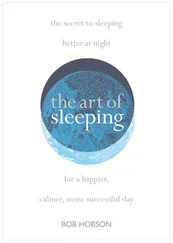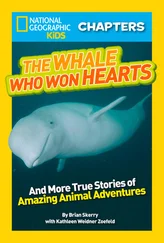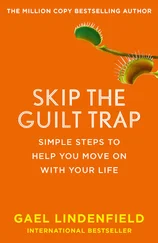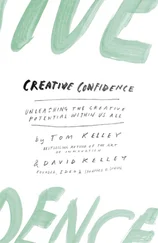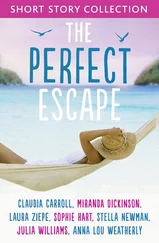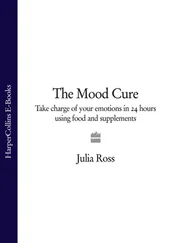Small world play
This is similar to the imaginative/fantasy play described above, but in small world play the child is the ‘puppet master’ – controlling the world and the action. Using play figures or toy cars, or even sticks and stones as characters, a child will act out their story or sequence of activities. Sets and scenes for the characters are useful (like dolls’ houses, garages, farm sets, etc, and can even be made by older children) but they are not essential – a child’s imagination is often enough.
Object play
This type of activity refers to the playful use of objects. These can be dolls, blocks, toy cars and puzzles as well as non-toys such as plastic bowls and empty cardboard tubes, wooden spoons and a silky scarf, or loose parts such as pine cones and giant buttons, as well as natural objects such as shells, leaves and pebbles or a few root vegetables. These objects are played with and explored, manipulated and lined up. Sometimes children over three years old will use objects imaginatively, as substitutes for something else – so a rectangular block might become a telephone, while a cardboard tube becomes a tunnel for a small car.
Books and stories
This is a well-loved form of play for babies, toddlers and young children who adore being told stories from books or in a grown up’s own words, and this magical, special category of play is very important in developing listening, language and pre-literacy skills. Young children in particular find picture books irresistible, and they can very quickly learn the techniques of page turning and ‘reading’ the story (often out loud) to themselves.
Creative play
This is when children respond creatively, using a wide range of media, to different stimuli in order to make something: mark-making, music-making, art-making, sculpting, construction and model-making. Activities involve painting, sticking, cutting, tearing, rolling, printing, scraping, colouring, spraying, flicking, squeezing and moulding. Dancing and dramatic play are also examples of creative play.
Sensory play
This is a very important category of play for babies and toddlers as they do most of their learning about the world around them via their sense of touch and taste (that’s why they go through that phase of ‘mouthing’ everything). Sensory play is about using all of the senses, so listening to music, and tapping and hitting things to create sound is included in this category. Sensory play is also playing with play dough, water, paper, plastic balls, leaves, mud, corrugated cardboard, wooden shapes, fabrics and shaving foam. It’s looking into mirrors, through coloured cellophane, at pictures, faces, the sky and watching the washing machine spin. Many examples of sensory play are multi-sensory.
Outdoor play
Considered by many to benefit the health and development of little ones more than any other form of play, outdoor play is not all about rough and tumble, running wild and getting up close to nature, although developing gross motor skills and experiencing flora and fauna first-hand is an important part of it. Most categories of play can be transferred to an outside arena and are more fulfilling and memorable for it.
How do they play?
How little ones play, and with whom, will change as their social and emotional skills develop. Babies and toddlers will mainly play alone, but sometimes they will do so in parallel with other children – they will play near to one another in a similar way but do not engage in play together. When they’re a little older children enjoy social play – making up all kinds of collaborative games with other children. Babies, toddlers and preschoolers will enjoy playing with us grown ups too, of course; from the earliest games of Peekaboo, to sharing a ‘cup of tea’, to having a kick-about in the garden as they really find their feet and get moving. Young children love it if they can get an adult to join in the fun.
Why should we let the children play?
The crucial beginnings of the brain’s building process occur between 0 and 3 years of age when there is a rapid production of connections between brain cells (synapses). By the time a child is three years old around 80 per cent of this development has already taken place; 90 per cent by the time they are five. Since play offers huge amounts of brain stimulation, it makes sense that it has a massive impact on the emerging cognitive, motor and social skills of young children. It’s through a kind of prism of play that children, using their natural creativity and amazing imaginations, make important cerebral connections and basically learn everything ; developing personal, social and emotional skills, communication, language and emerging literacy, problem-solving, reasoning and emerging numeracy, knowledge and understanding of the world and all their physical skills – a whole spectrum of thinking and knowing and learning. And to think they’re just playing !
Ready steady play
Before we begin . . .
It’s at about the time when a baby reaches toddlerhood that our homes might begin to fill up with numerous flashing, noisy, plastic, branded gadgets and toys. This is far from necessary, and actually can be a bit of a barrier to accessing the 7 Ways to Play. Rather than buying toys that do more and more of the thinking for them, now’s the time to seek out those toys that really stimulate your children’s brilliant imaginations and which will promote open-ended play. If this means having a toy audit and giving away, or at least putting into storage, a lot of their stuff – now’s the time to do it. Honestly, those flashy plastic things won’t be missed a jot. The 7 Ways to Play method will result in you actually needing fewer, not more, toys for your toddler and preschooler, which they will play with more and for longer periods of time.
Preparing for play
The 7 Ways to Play method supports the idea that toys are just one of the many things children need when playing. You will find that they will use more art supplies and general household stuff in their play. Non-toys – or real objects – are often fantastic playthings and, as long as they’re clean, are not sharp or pinch hazards, or left out all the time, they can make for really interesting and useful tools and toys in play.
Here are a few things to look out for, and make room for, after all those bleepy, flashy plastic things have been adios -ed. It’s all about experiences rather than specific equipment, though, so do adapt this list; make use of what you have – make it work for you, and your family, in your home.
 Toys that promote open-ended play – things that don’t do all the thinking for them; like Lego and other construction toys, imaginative-play toys and books.
Toys that promote open-ended play – things that don’t do all the thinking for them; like Lego and other construction toys, imaginative-play toys and books.
Practical-life equipment – such as an extra washing-up bowl, cloth and sponge, a dust-cloth, clothes pegs.
A child-sized soft-bristled broom and dustpan and brush.
A sand-timer.
Some child-friendly kitchen equipment: jug, grater (we invested in a kid-friendly grater, as seen on the CBeebies cooking show I Can Cook ), juicer, pestle and mortar, wooden spoons, measuring spoons, bowls and children’s scissors. (Really small children will need supervision with some of these sharper items.)
 Some child-sized basic gardening equipment: a small watering can, trowel or spade or fork, and an outside broom.
Some child-sized basic gardening equipment: a small watering can, trowel or spade or fork, and an outside broom.
 Lots of clean, interesting, plastic, polystyrene and cardboard packaging that is otherwise destined for the recycling box.
Lots of clean, interesting, plastic, polystyrene and cardboard packaging that is otherwise destined for the recycling box.
Читать дальше

 Toys that promote open-ended play – things that don’t do all the thinking for them; like Lego and other construction toys, imaginative-play toys and books.
Toys that promote open-ended play – things that don’t do all the thinking for them; like Lego and other construction toys, imaginative-play toys and books.




